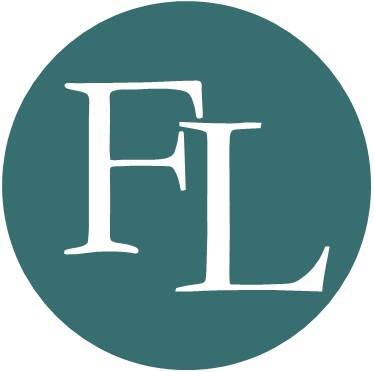Find out the answers to your questions
Frequently Asked Questions (FAQs)
Explore our FAQs for clear and precise answers on Industrial Property.

Questions about Industrial Property
Discover the fundamentals of industrial property and how it can protect your innovations
What is a patent?
A patent is an industrial property right that grants its holder an exclusive monopoly of exploitation for a limited period (generally 20 years) on a technical innovation, meaning a product or process that provides a technical solution to a technical problem.
At Fedit-Loriot, our experts assist you with all patent-related procedures.
What is a trademark?
A trademark is a distinctive sign used to identify and differentiate a company’s products or services from those of its competitors. It can take various forms: a name, logo, slogan, color, sound, or a combination of these elements.
Once registered, a trademark is protected and can be renewed indefinitely every ten years. Trademark protection prevents other entities from using it identically or similarly for identical or similar products or services in the geographical areas where it is registered.
At Fedit-Loriot, we guide you in choosing, registering, and managing your trademarks for optimal protection.
What is a design?
A design pertains to the aesthetic appearance of a product, including visual aspects such as shape, patterns, lines, contours, or colors. The design protects the appearance of an industrial or handcrafted object, but not its technical functionality. Protection typically lasts five years, renewable in successive periods up to 25 years. This right allows the holder to prevent third parties from reproducing or selling a product with the same design without authorization.
The Fedit-Loriot team assists you in protecting and registering your designs.
What are the differences between a patent, a trademark and copyright?
Copyright protects original works of the mind (literary, artistic, musical works, etc.) without requiring registration. The protection lasts for the author’s lifetime and generally extends up to 70 years after their death.
In summary, a patent protects technical innovation, a trademark protects commercial identity, and copyright protects artistic and intellectual expression.
The Fedit-Loriot team and its experts assist you with all your protection procedures, whether for patents, trademarks, or designs, ensuring a comprehensive and secure industrial property strategy.
Questions about patents
Discover the basics of industrial property and how it can protect your innovations
What types of inventions are patentable?
To be eligible for a patent, an invention must meet the criteria for patentability and must not be expressly excluded from legal protection.
The criteria for patentability are novelty, inventive step, and industrial applicability.
Novelty: The invention must not have been made available to the public before the filing date, regardless of the author, date, location, means, and form of this public disclosure. By conducting searches on Espacenet or similar databases, it is possible to assess the novelty of your invention before filing an application.
Inventive step: The invention must not be obvious to a person skilled in the art based on the state of the art.
Industrial applicability: The invention must be capable of being made or used in a specific industrial field.
At Fedit-Loriot, our experts can advise you and assess the patentability of your invention.
What is the validity period of a patent?
A patent is generally valid for a maximum period of 20 years from the filing date, provided that maintenance fees are paid, usually annually. After 20 years, the technology enters the public domain and can be used freely.
What is the cost of filing a patent application?
The cost of filing a patent application varies depending on several factors, including the country of filing and the fees of intellectual property advisors.
To obtain an accurate estimate tailored to your project, feel free to contact us. We can provide you with a detailed quote based on your needs.
What is the geographical scope of a patent?
The geographical scope of a patent is limited to the countries where it has been filed and granted. For example, a patent filed and granted in France protects the invention only in France. To extend this protection to other countries, additional steps are required.
There are several options for obtaining international protection:
- National patent: Protection in a specific country.
- European patent: A single application with the European Patent Office (EPO) that allows designation of several European countries.
- International filing via the PCT (Patent Cooperation Treaty): This system centralizes an application for over 150 member countries, though each national or regional office then conducts an individual examination to decide on the grant.
Additionally, there are other regional cooperations similar to the European patent, such as the African Intellectual Property Organization (OAPI), covering several African countries, or the African Regional Intellectual Property Organization (ARIPO). These organizations facilitate patent protection in groups of countries through a single filing.
We can assist you in choosing the best strategy for the geographical extension of your patent based on your target markets and protection needs.
What is the difference between a national patent, a European patent, and an international filing?
National patent: Filed in a specific country, it offers protection only within that country.
European patent: Allows filing a single application with the European Patent Office (EPO), covering the designated member states in the application.
International filing (PCT): The Patent Cooperation Treaty (PCT) allows centralizing the application for potential protection in multiple countries. While it does not grant an international patent, it simplifies the process of extending protection to other countries.
What is the average duration of the patent granting procedure, from filing to obtaining, and what are the key steps?
The average duration of the patent granting procedure, from filing to obtaining, is generally between 2 to 5 years. However, this duration can vary depending on the complexity of the invention and administrative delays.
Here are the main steps of this procedure:
- Filing the application (T0): The patent application is filed with the patent office. A filing date is assigned, marking the start of the protection.
- Search report (around +9 months for France): The patent office conducts a prior art search to identify similar existing inventions. A preliminary search report is then sent to the applicant, who can assess the patentability of the invention.
- Priority and international extensions (12 months): The applicant has 12 months after the initial filing to claim priority and file applications in other countries to protect the invention internationally.
- Publication of the application (around +18 months): The patent application is published, making the invention’s details accessible to the public. This also marks the start of the “provisional protection,” allowing the applicant to notify third parties of the application.
- Substantive examination: The patent office examines the application in detail to ensure the invention meets the patentability criteria (novelty, inventive step, industrial applicability). This step may involve exchanges between the office and the applicant.
- Granting of the patent (around +30 months or more): If the examination is successful and the criteria are met, the patent is granted, offering official protection in the country of filing.
We assist you at every step of the process: drafting the application, responding to objections from the patent offices, and making modifications to optimize the chances of success. Our experts ensure your invention receives the best possible protection in compliance with the requirements of the patent offices.
What is freedom to operate?
Freedom to operate (FTO) refers to the ability to use, manufacture, sell, or distribute a product or technology without infringing on the intellectual property rights of a third party, such as patents. This means that before launching a product or technology, a company must ensure there are no existing patents that could block its commercialization.
To assess freedom to operate, a thorough search is often conducted on existing patents in the countries where the company plans to launch its product. This analysis helps identify potentially problematic patents and, if necessary, take steps to mitigate infringement risks, such as negotiating licenses or modifying the invention.
The Fedit-Loriot team can assist you in conducting freedom-to-operate searches and interpreting the results to minimize the risk of litigation.
Questions on trademarks and designs
Discover the fundamentals of industrial property and how it can protect your trademarks and aesthetic creations
How is a trademark protected?
Trademark protection is achieved through registration with an intellectual property office. Here are the key steps to protect a trademark:
- Choosing and verifying the trademark: It is crucial to select a distinctive trademark and verify its availability through a prior art search to ensure it is not already in use or registered by a third party for identical or similar goods or services.
- Filing the application: The application is filed with the relevant office (such as the INPI in France, the EUIPO for the European Union, or the WIPO for an international trademark), specifying the goods or services to be covered.
- Examination and publication: The office examines the application to ensure it meets legal criteria, then publishes it. This allows third parties to oppose the application if they believe the trademark infringes on their rights.
- Registration and protection: If no objections are raised, the trademark is registered and enjoys protection, which typically lasts 10 years and can be renewed indefinitely.
The Fedit-Loriot team supports you through all these steps, from prior art checks to filing, to maximize your chances of securing long-term protection.
How is a design protected?
The protection of a design is obtained through registration with an intellectual property office to protect the visual appearance of a product (shapes, patterns, colors). Here are the steps to protect a design or model:
- Creation and selection of the object: The design must be original and have its own distinctive character.
- Filing the application: The application is filed with the relevant office (INPI for France, EUIPO for the EU, or WIPO for international protection), including precise visual representations of the design.
- Examination and registration: The office examines the application for compliance, and if accepted, the design is registered. Protection is granted for an initial period of 5 years, renewable up to 25 years depending on the jurisdiction.
The Fedit-Loriot team guides you in preparing visuals, filing the application, and renewals to ensure solid and long-lasting protection for your creation.
What is the duration of protection for a trademark or a design?
The duration of protection differs between a trademark and a design:
- Trademark: A trademark is protected for an initial period of 10 years from the filing date. This protection can be renewed indefinitely every 10 years, as long as renewal fees are paid and the trademark is used.
- Design: A design is protected for an initial period of 5 years from the filing date. The protection can be renewed in 5-year periods, up to a maximum of 25 years in most jurisdictions.
What are the fees related to the protection of a trademark or a design?
The fees related to the protection of a trademark or a design include several elements, which vary depending on the filing territory and the chosen options.
The Fedit-Loriot team can provide you with an accurate quote for the protection of your designs, and trademarks, taking into account the territories and protection strategies suited to your needs.
The Importance of Industrial Property
Why Choose Fedit-Loriot for Your Industrial Property
At Fedit-Loriot, we believe that industrial property is essential for growth and innovation. Our mission is to support our clients in the protection and commercialization of their creations, while helping them navigate the complex landscape of intellectual property. We are committed to providing tailored advice, adapted to your specific needs, enabling you to focus on what truly matters: your innovations.
Contact Us
For any additional questions or to schedule a consultation, feel free to contact us. Our team of experts is available to provide you with personalized advice tailored to your industrial property needs.
